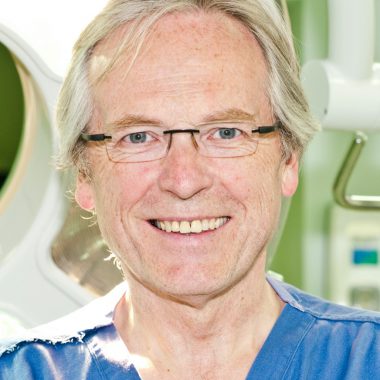The new chair of the NICE advisory panel on QOF has said he has ‘no idea’ why GP leaders have opposed the introduction of an indicator promoting statin use in patients at a 10% 10-year risk of cardiovascular disease.
Professor Danny Keenan, the cardiothoracic surgeon who took over chairing the QOF advisory panel earlier this year, told Pulse the RCGP and GPC were disregarding the evidence base for NICE guidelines, which he said had clearly shown statin use at the 10% threshold would benefit patients.
It came after the panel yesterday gave the green light for the 10% threshold to be included in QOF, despite opposition from some on the panel itself.
Professor Keenan said that the evidence has been ‘debated extensively’.
He told Pulse: ‘We are implementing evidence into indicators, which are there in order to improve practice. It’s inconceivable that a committee developing indicators could disregard evidence.
‘It’s not like the evidence is iffy or hasn’t been debated – it has been debated extensively and agreed, you can’t come in and go against it.’
Asked why he thought the profession was still so concerned if the evidence was clear-cut, Professor Keenan said he had ‘no idea why they had a problem’.
Professor Keenan said: ‘We have no idea. I don’t really know why – evidence is evidence, I don’t know why they have a problem accepting the guidance has moved from 20% to 10%.’
He added: ‘Today [GPs] are rewarded at the 20% risk threshold for statin use and tomorrow – or whenever it is implemented they will be rewarded at the 10%.’
Related stories
NICE recommends introduction of 10% statin threshold into QOF despite GP opposition
Former QOF advisory chair says ‘NICE has lost the plot’ on 10% statin threshold
The NICE QOF advisory panel yesterday gave the go-ahead for the new indicator, which will reward practices for ‘the percentage of patients aged 25-84, with a new diagnosis of hypertension or diabetes who have a recorded cardiovascular risk assessment score of 10% or greater, who are currently treated with statins’.
The RCGP and GPC lodged official objections to the indicator during consultation – arguing it would over-medicalise the population and risked undermining the credibility of QOF amongst the profession.
However, Professor Keenan insisted that NICE had listened to the RCGP and GPC concerns over the proposed indicator, by putting forward a separate indicator which will incentivise lifestyle advice in these patient groups.
He said: ‘I thought we got a good solution, we obviously listened to the committee and the result of the consultation which was to add in lifestyle advice, which came across clearly and went in the indicator.’
Professor Keenan also rejected criticisms – voiced during the QOF advisory group meeting – that the indicator did not reflect guidance by using the wording ‘treated with’ rather than ‘offered’ a statin.
He said: ‘We went over the guideline – the use of the words – and it is actually quite prescriptive. If you read the guideline it is unequivocal that you should give the treatment.’
In the run-up to the panel’s meeting this week, the former chair said ‘NICE had lost the plot’, while GP leaders expressed concern at the panel being headed by a non-GP.

















